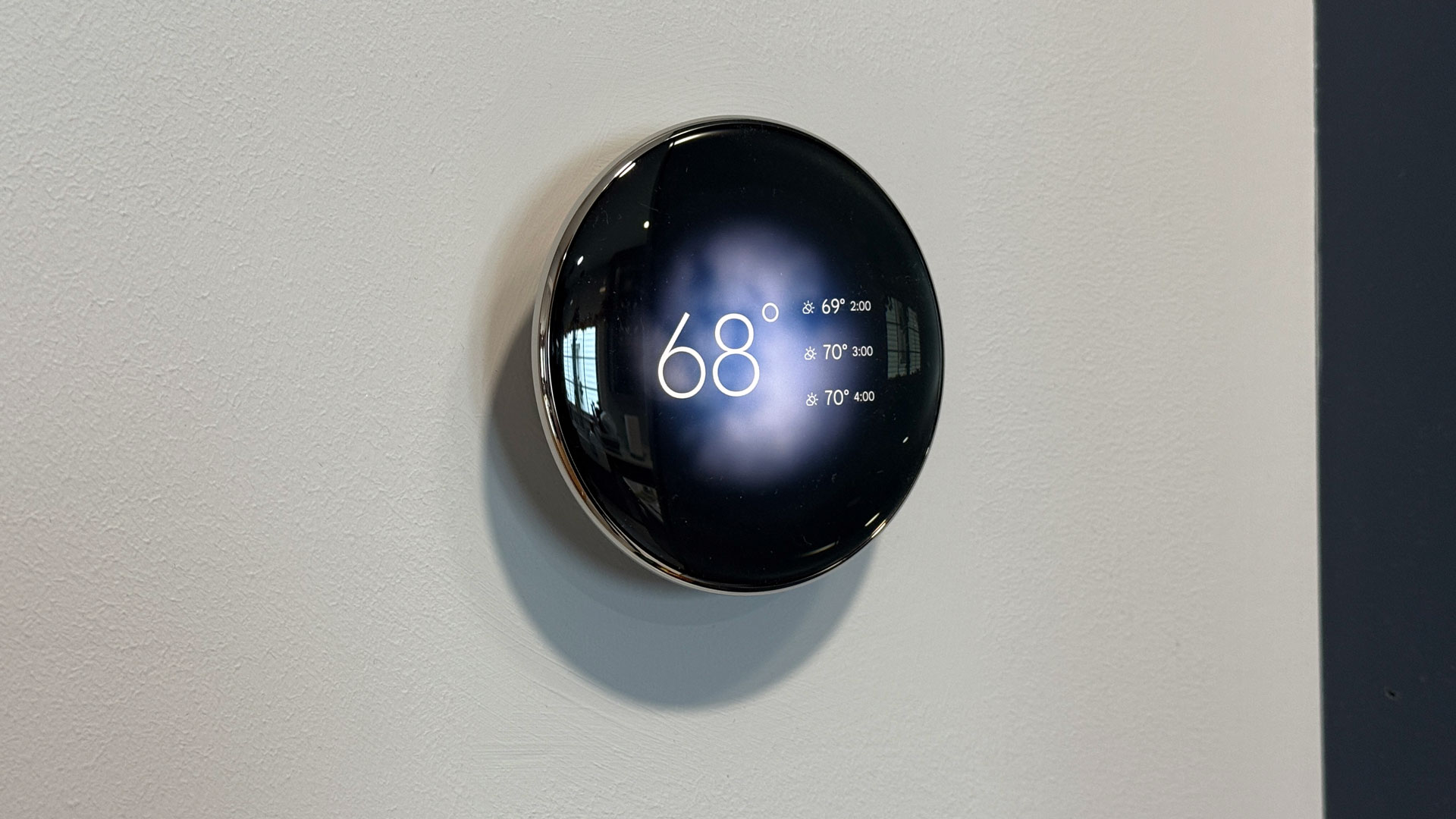TechRadar Verdict
Even with a price increase, Google's fourth-generation Nest Learning Thermostat really impresses with a gorgeous design and easy installation. Regarding smarts, the right upgrades were made to make the suggested changes a bit more actionable, and they will even account for local weather conditions. It's a great smart thermostat, we just wish it was available more globally.
Pros
- +
A gorgeous, new design that retains the iconic swivel controls
- +
Smarter than ever before with its learning features
- +
Matter support means this works with Apple Home
Cons
- -
Only available in the United States and Canada
- -
Not plug-and-play if you're upgrading from a previous Nest thermostat
Why you can trust TechRadar
One Minute Review
The fourth-generation Nest Learning Thermostat blends a terrific redesign with the smart features that we've all come to expect from the company's devices. Google arguably set the bar very high back in 2011, with a control set that mirrored an iPod, and the ability to learn your cooling or heating schedule from the get-go.
Between the facelift that makes it look more like a piece of art on your wall and the 'AI' power infused into its already well-regarded learning features, the fourth-generation Learning Thermostat is a pretty easy recommendation for most folks. Even when accounting for the price increase of up to $280, the fourth-generation model is more than a bit smarter, and now includes a temperature sensor in the box as well.
I especially liked the smaller changes, including the ability to accept or decline suggested temperature changes to my schedule, but besides the design, the best functionality change is the adjustable and more helpful display. Displaying the active temperature and visual for the weather from afar, and showing highs and lows as I get close, the FarSight feature means the new Nest Learning Thermostat is useful even when I'm not using it to adjust temperatures.
Setup within the Google Home app was easy for me, but my colleagues weren't as lucky, and most of the experience with the app is pretty basic. It might be intentional, but something a bit more full-featured would have been nice. Even so, adding Matter will make the folks waiting to use a Nest natively in the Apple Home app pretty darn happy. Myself included.
As a whole, the fourth-generation Nest Learning Thermostat evolves into the modern age of the smart home in a successful fashion, which I think will make folks upgrading from a previous model quite happy (even though it's not plug-and-play). People new to Nest will find it to be feature-filled. That makes the decision of only releasing the fourth generation in the United States and Canada a bit more baffling.
Nest Learning Thermostat 4th Gen: price and availability
The Nest Learning Thermostat Fourth-Generation is available in the United States and Canada. You get your pick of Polished Gold, Polished Silver, or Polished Obsidian for $279.99 in the United States, or $379.99 in Canada. A temperature sensor is included in the box, but you can buy a single additional unit for $29.99 or a three-pack for $99.99.
As of now, there is no timeframe for when the fourth generation might launch outside the United States or Canada.
Sign up for breaking news, reviews, opinion, top tech deals, and more.
Nest Learning Thermostat 4th Gen: design
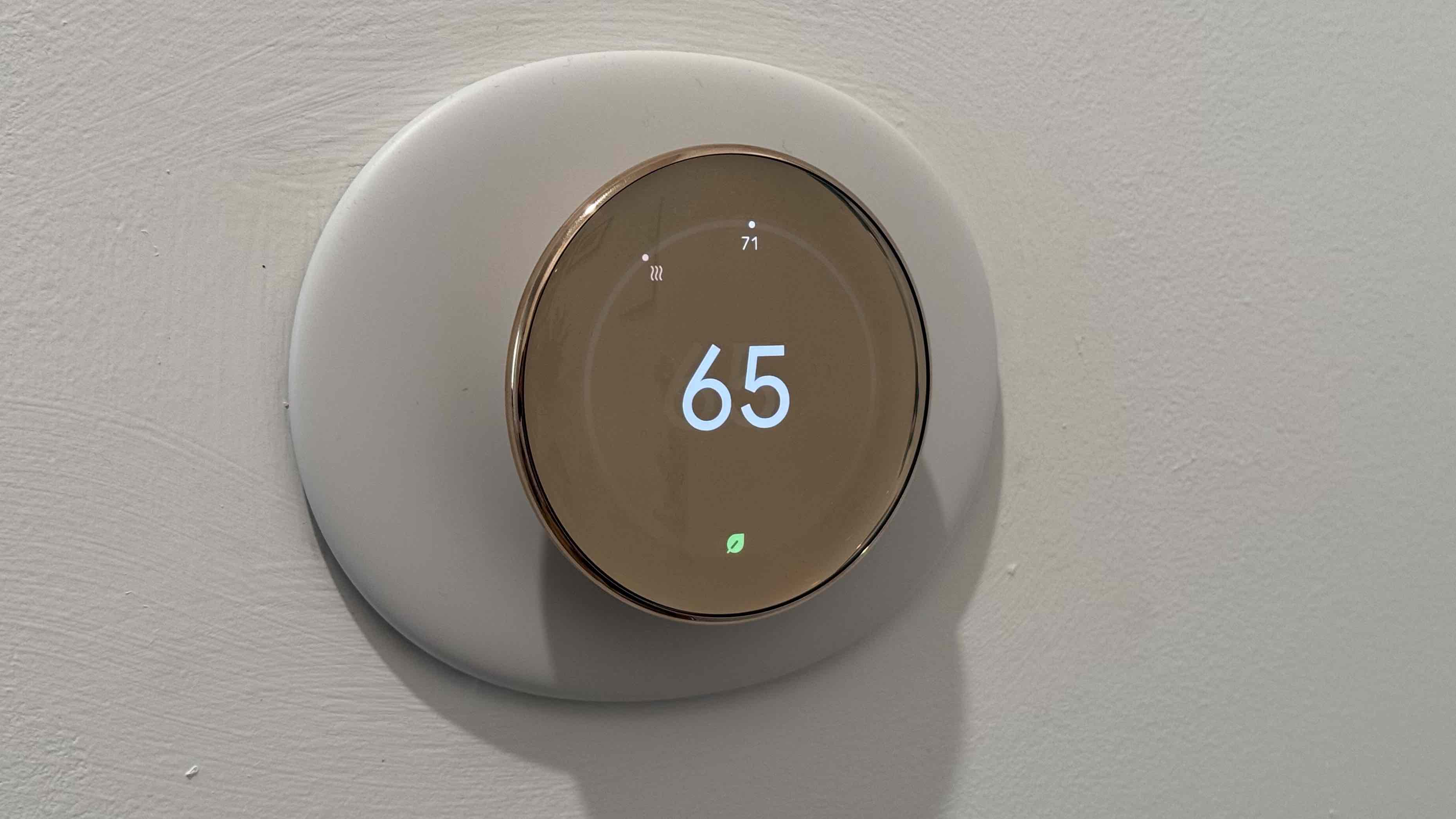
- The new Nest Learning Thermostat looks stunning.
- It was a simple install, though it's not plug-and-play if you're upgrading from an existing Nest.
- The larger, upgraded display steals the show and navigation is still impressively simple.
While the fourth generation model still inherently operates like the original Nest Learning Thermostat that dropped way back in 2011, it’s by far the biggest redesign the device has ever received. When mounted on the wall, it looks more like a piece of art hanging than a thermostat – especially in the ‘Polished Gold’ that I’ve been testing, which gives major rosy vibes when the light hits it right.
It’s the best-looking smart thermostat around, neither screaming 'technology' nor resembling a classic plastic thermostat. It’s sort of a cross between the two, with a design that allows the true smarts of the Nest Thermostat to shine through. More on that later.
Rather than a small, thick circular thermostat that gets placed on a bracket and then a mounting plate if you so desire, the Nest Thermostat fourth-generation has a slightly larger footprint on the wall itself. That’s not a bad thing, because this circular piece is attached via the bracket to your wall, acting as the stand for the thermostat's slim and elegant main hull.
It’s kind of like a supersize Google Pixel Watch 3, with the 3.9-inch circular, almost bezel-free dome giving the impression that it’s floating. You’ll turn this whole piece to the right or left to raise or lower the temperature. Google’s design team is still adamantly against touchscreens here, so you’ll click and turn it to complete most other tasks too (including some parts of the setup process), but you'll mainly use it to adjust heating and cooling modes.
The installation was really a breeze; in my apartment in New Jersey, where I’ve been testing the fourth-generation Nest Thermostat for several months, it took me no more than about 15 to 20 minutes to install. I wasn’t upgrading from a previous Nest, but considering the plate here is a different size, you will need to swap those out if you are. That's kind of a bummer, as it’s not a super simple swap for the faithful already invested in the ecosystem.
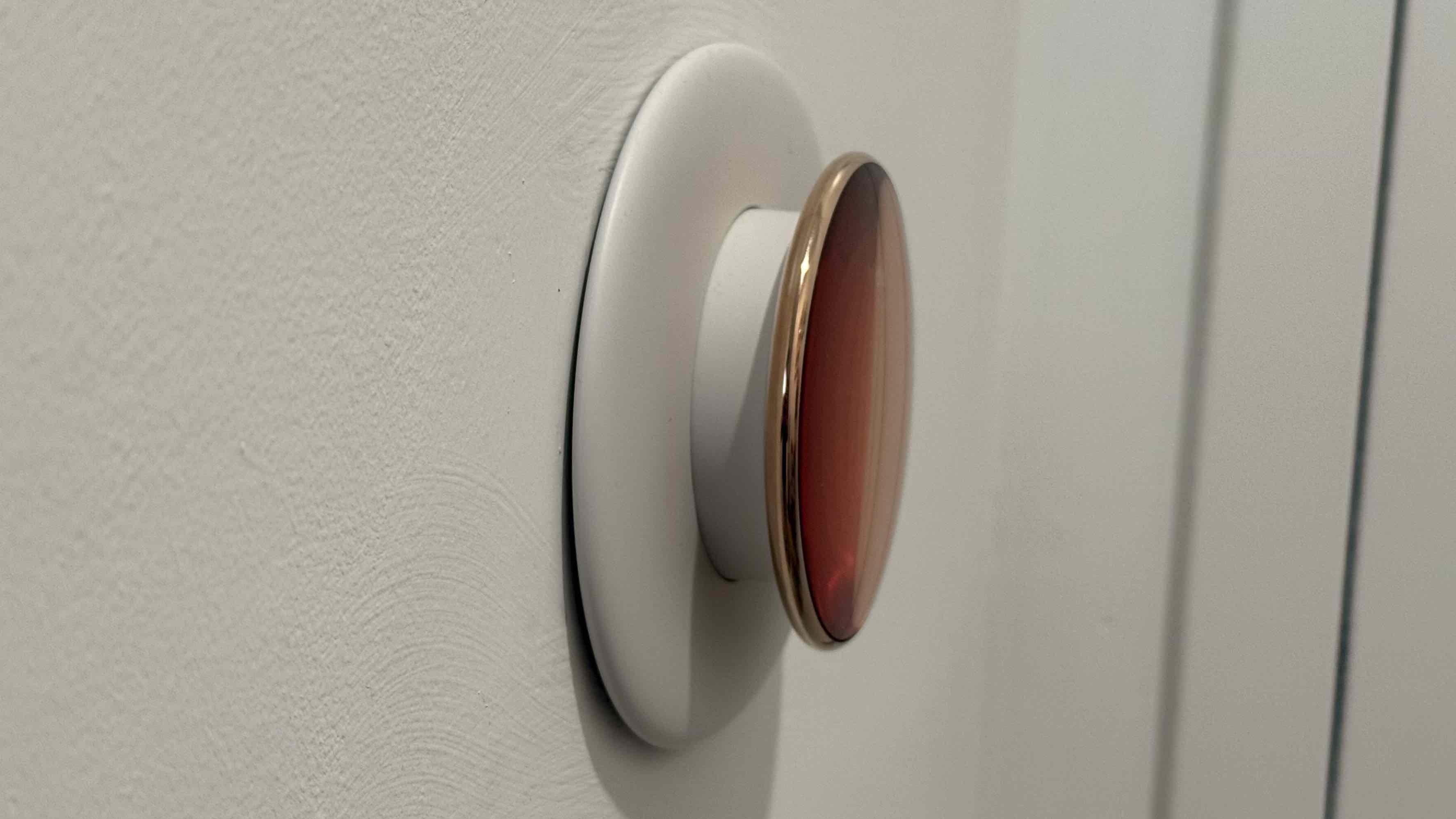
Still, Google provides mostly everything in the box, including the main bracket and a helpful wiring guide. Essentially, you’ll install the main steel bracket and use the included screws to get that on the wall. Then you have the thermostat base, which you’ll guide the wires through. You also get the mounting plate, which I opted to use, but that's optional.
Google is continuously moving things into its main Google Home app, which my colleague Lance Ulanoff, TechRadar’s Editor-at-Large, found particularly troublesome when trying to install his fourth-gen Nest Learning Thermostat. In my case, since I was setting this up as new in my ‘Google Home,’ things went a bit more smoothly – though Google Home did take a few tries to successfully connect to the thermostat after proper installation with wiring in my HVAC system, and ultimately, it’s a very basic control app for this thermostat.
The idea is that if you're currently using the Nest app, it will push you to use the Google Home app instead, and if you’re new, you’ll need to start with Google Home. Even if you bought the Nest Learning Thermostat for its Matter capability so you can use it with Apple's Home app (which does work eventually), you need to start with Google Home. Luckily, the team brought the easy installation help to the Google app, which will perform some checks, including a test of heating and cooling modes.
Once it's set up in Google Home, you get to take advantage of the major benefit of the Nest Learning Thermostat, and that’s the Matter support. Oddly enough, there is no Thread connectivity here, which is a strange omission. If you select your Nest Learning Thermostat within the Google Home app and then navigate to Settings > Device information > Linked Matter apps & services, it will generate a code that you can scan or send to Apple’s Home app, for example. You can also select and review the Matter code on the Nest Learning Thermostat itself.
You’ll need to set it up with a Google account in the Google Home app first, but the nice thing about a Nest thermostat is that the app eventually fades away, and you can focus on controlling it from the device itself or let the smart scheduling take the wheel.
As far as the classic mechanic, it’s smooth as ever with just the right amount of resistance to maneuvering the dial I’ve had more than a few friends ask me what it is when spotting it on the wall in the front of my apartment – it’s simply an eye-catcher.
The 3.9-inch LCD screen almost appears like it’s hidden behind the finish – a cool effect – and the content can change based on where you are. For example, if it doesn’t detect you directly nearby, it will use larger graphics that can be seen from a distance. If you approach, the Soli sensor – read as radar – will detect you and adjust the content as you get nearer. It’s dubbed the ‘Farsight’ display, and you can adjust it to show high and low temperatures, air quality, and even weather. You’ll set these from the device itself, but the weather animations are really neat.
It’s also a point of difference with competing thermostats like those from Ecobee, which tosses a speaker and a microphone into select models. I think the Nest Thermostat packs features that make more sense. Seeing the weather quickly as you’re heading out the door or picking what coat to wear is neat.
The display feels inherently meshed with this new look – it won’t steer away the folks who have loved Nest from the beginning, and it really looks dynamite. There also isn’t a better control system than just turning to the left or right and pushing in. Apple had it first with the iPod, but considering multitouch, I think it’s the gold standard for thermostat control.
- Design Score: 4.5/5
Nest Learning Thermostat 4th Gen: Performance
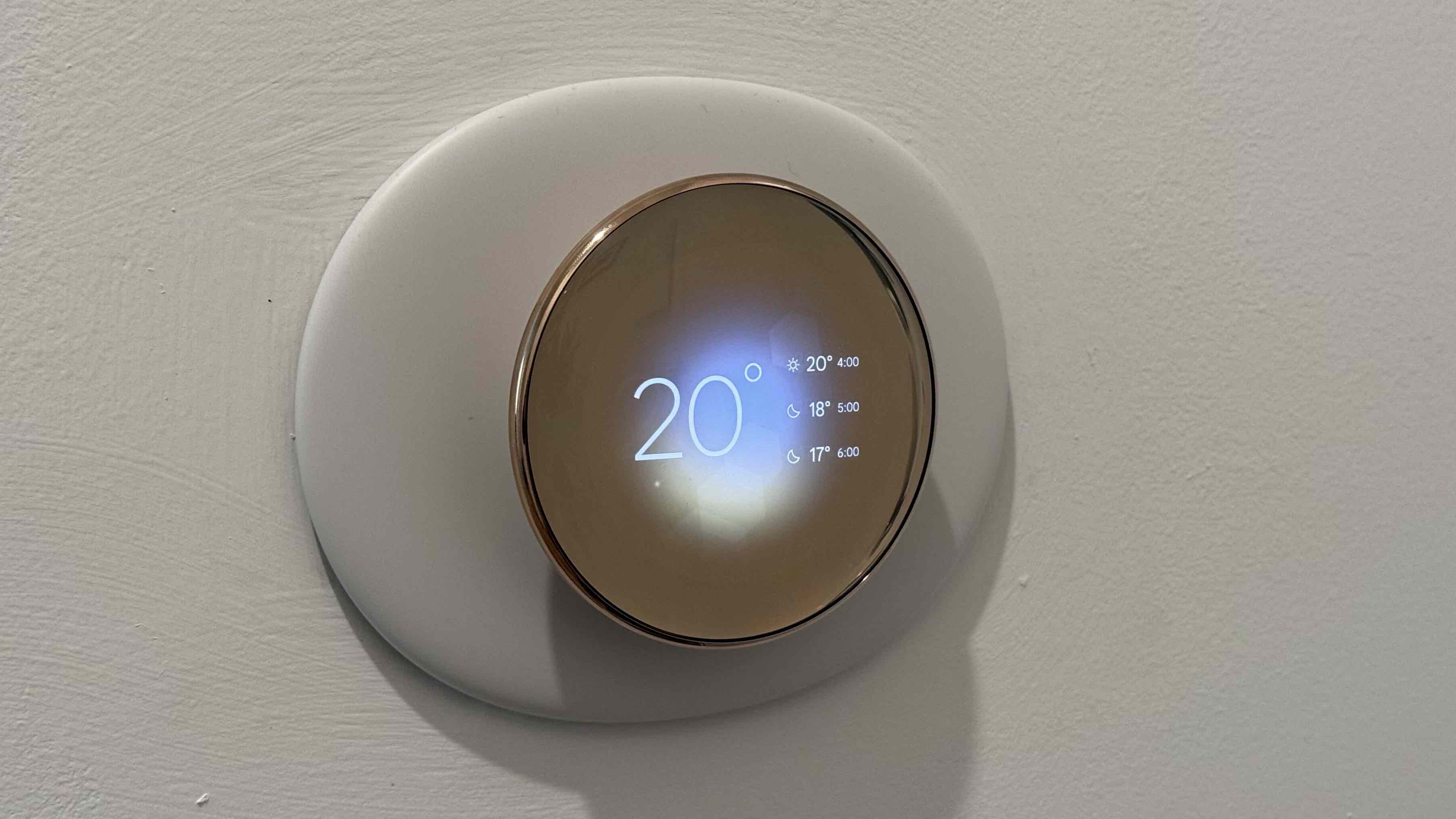
- The Google Home app is pretty basic, and it has some connectivity issues.
- Yes, the Nest finally works with Apple Home.
- The AI-infused learning features impress and make cooling or heating a home easier.
I’ve been testing the Nest Thermostat Fourth-Generation for several months, which means I’ve used it for a few seasons, including summer, fall, and winter. That’s pretty important to see how the smart scheduling reasoning and, ultimately, the functionality of the Nest handle the swap from cooling to heating.
Much like any other gadget released in 2024, Google has tossed in some AI capabilities, mainly affecting how the Nest Thermostat adjusts the temperature. This makes the previous learning aspects of Nest – arguably, the main appeal – a bit smarter and quicker once you get in a rhythm, but also more actionable. For instance, with the new Smart Schedule feature, you can accept or decline the adjustments it suggests, whether that’s a degree or cooler at night or warmer in the morning.
Further, as it begins to notice the change from cooling or heating, it takes a few days to stop suggestions and focus on learning before updating and delivering a custom schedule that you can manage if you like.
These minute changes that the Nest Thermostat suggests could lower your energy bill (aka the cost of cooling or heating your home), but you may not see those impacts immediately. What you might be able to do here in the United States is to see if your utility provider offers any rebate for the cost, as the latest Nest isn’t the cheapest.
Beyond learning from your habits and adjustments – on the thermostat, via the app, or through a smart assistant – it will consider conditions around your home. For example, if it’s a warmer day in the winter, it might lower your heating temperature to save on energy and factor in that your home might stay warmer for longer on its own. It's the same thing for a cooler summer day, and it works quite well. Similarly, if your forecast predicts a frigid temperature turn, it might turn the heating on earlier to ensure you’re still at a comfortable temperature in your home.
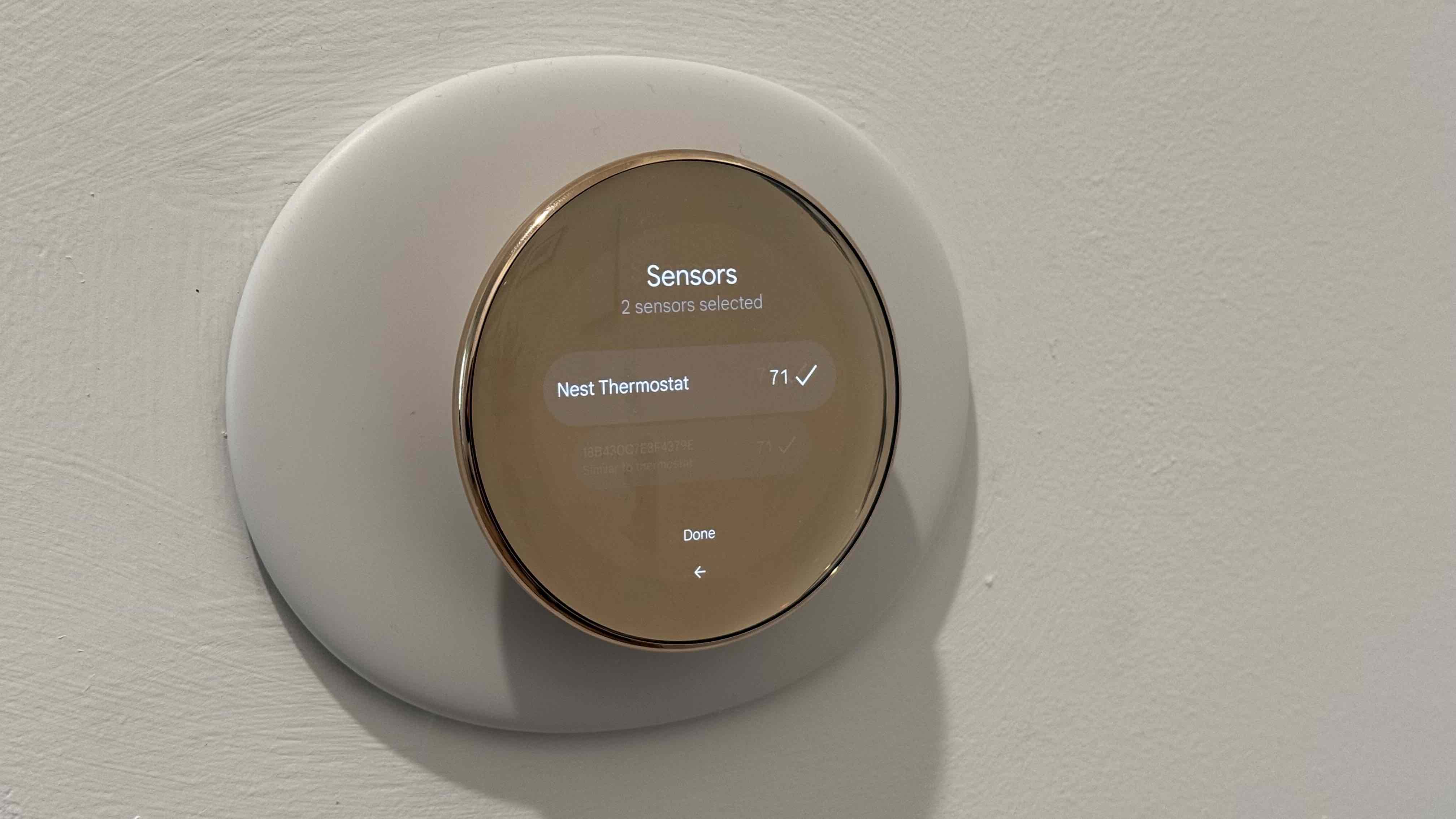
As with previous Nest thermostats, you can expect all of these to get better as you spend more time with the unit, and that’s exactly what I’ve found. I wouldn’t go into it expecting it to master your desired temperatures after just a few days, but you need to spend a week or two with it to see meaningful suggestions.
The thermostat also comes with a pebble-shaped sensor, which helps measure the temperature more accurately inside your home. The idea is to place this somewhere in your house away from the Nest Thermostat, which contains its own sensor, so it can get a proper read of the temperature and ensure the desired conditions are found throughout.
Including this in the box is pretty nice, and helps to make up for the price increase to $280. Unfortunately, although the Nest Thermostat works with Matter and therefore Apple Home the sensor doesn’t seem to move over. There were also several occasions when adjusting the temperature in the Apple Home app didn't work properly the first time, especially shortly after I first installed the unit. Thankfully that's now become far less frequent, and I’ve successfully controlled it from a range of Apple devices and through Siri. You can also integrate it through automation within Apple Home; the same goes for Google Home’s automation.
As far as the Google Home app goes, it’s pretty basic for controlling the Nest Learning Thermostat, but that might be intentional as the real appeal is these AI-infused learning features, which ultimately still impress. The fourth-generation Nest Thermostat shows an evolution in terms of features and revolution with design, but it’s still a compelling experience that lets you spend less time fiddling with a thermostat.
- Performance Score: 4/5
Scorecard
| Category | Comment | Score |
| Design | The new Nest simply looks stunning and retains the iconic, simple controls. | 4.5/5 |
| Performance | Google made some serious improvements with the smarts and many will appreciate that it takes into account weather conditions. | 4/5 |
| Value | Even with a more expensive MSRP, the Nest Thermostat fourth-gen ups the smarts and ushers in a great design. | 4/5 |
Should I buy theNest Learning Thermostat 4th Gen?
Buy it if...
You want an easy-to-use, good-looking thermostat
There's never been a better-looking thermostat than the fourth-generation Nest, and luckily, it keeps the impressive controls that made it a winner back in 2011.
You want a Nest Thermostat that works with Apple Home
Thanks to Matter support, after setup in the Google Home app, you can easily generate a code and add the Nest to your Apple Home.
You want a thermostat that factors in environmental conditions and does the heavy lifting for you...
Like every Nest thermostat before it, the learning features are the stand out feature here and it now factors in your local weather to see if it needs to adjust the temperature.
Don't buy it if...
You're not in the United States or Canada
Sadly, the fourth-generation Nest is only available in the US and Canada, so you'll need to consider a different model.
You don't want to use the Google Home app
You'll need to have a Google account and use the Google Home app to setup and get the most out of the Nest Learning Thermostat.
Also consider
Nest Thermostat E – Read our review here
With a much more affordable price tag, the Nest Thermostat E is an excellent model to consider if you can find it in stock as it utilizes the same easy controls that put Nest on the map.

Jacob Krol is the US Managing Editor, News for TechRadar. He’s been writing about technology since he was 14 when he started his own tech blog. Since then Jacob has worked for a plethora of publications including CNN Underscored, TheStreet, Parade, Men’s Journal, Mashable, CNET, and CNBC among others.
He specializes in covering companies like Apple, Samsung, and Google and going hands-on with mobile devices, smart home gadgets, TVs, and wearables. In his spare time, you can find Jacob listening to Bruce Springsteen, building a Lego set, or binge-watching the latest from Disney, Marvel, or Star Wars.
